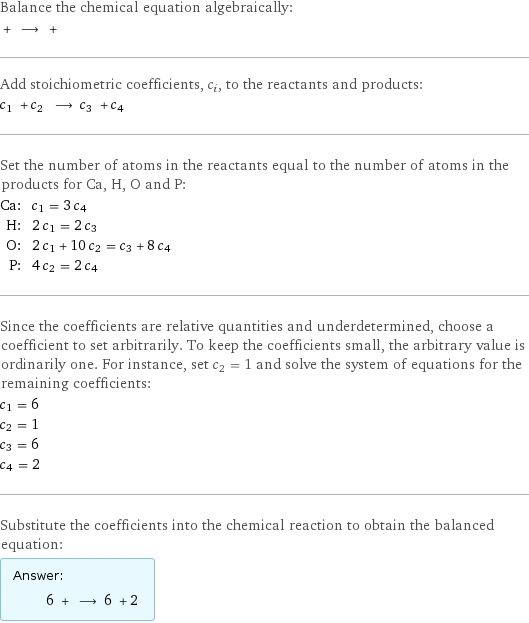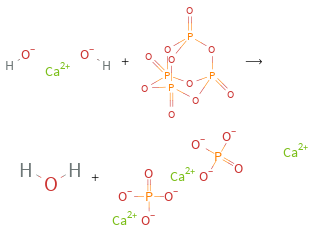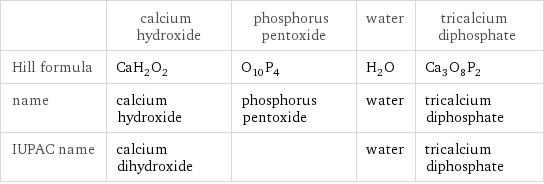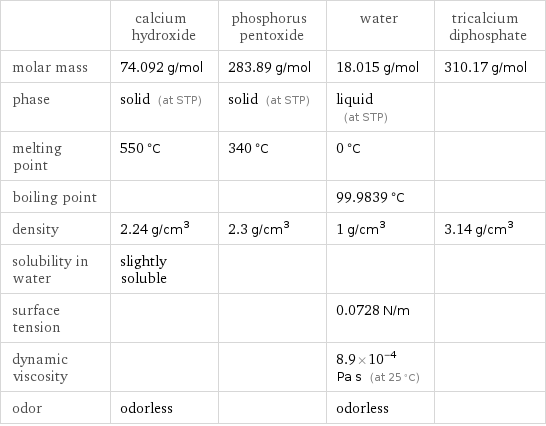Input interpretation

calcium hydroxide + phosphorus pentoxide ⟶ water + tricalcium diphosphate
Balanced equation

Balance the chemical equation algebraically: + ⟶ + Add stoichiometric coefficients, c_i, to the reactants and products: c_1 + c_2 ⟶ c_3 + c_4 Set the number of atoms in the reactants equal to the number of atoms in the products for Ca, H, O and P: Ca: | c_1 = 3 c_4 H: | 2 c_1 = 2 c_3 O: | 2 c_1 + 10 c_2 = c_3 + 8 c_4 P: | 4 c_2 = 2 c_4 Since the coefficients are relative quantities and underdetermined, choose a coefficient to set arbitrarily. To keep the coefficients small, the arbitrary value is ordinarily one. For instance, set c_2 = 1 and solve the system of equations for the remaining coefficients: c_1 = 6 c_2 = 1 c_3 = 6 c_4 = 2 Substitute the coefficients into the chemical reaction to obtain the balanced equation: Answer: | | 6 + ⟶ 6 + 2
Structures

+ ⟶ +
Names

calcium hydroxide + phosphorus pentoxide ⟶ water + tricalcium diphosphate
Chemical names and formulas

| calcium hydroxide | phosphorus pentoxide | water | tricalcium diphosphate Hill formula | CaH_2O_2 | O_10P_4 | H_2O | Ca_3O_8P_2 name | calcium hydroxide | phosphorus pentoxide | water | tricalcium diphosphate IUPAC name | calcium dihydroxide | | water | tricalcium diphosphate
Substance properties

| calcium hydroxide | phosphorus pentoxide | water | tricalcium diphosphate molar mass | 74.092 g/mol | 283.89 g/mol | 18.015 g/mol | 310.17 g/mol phase | solid (at STP) | solid (at STP) | liquid (at STP) | melting point | 550 °C | 340 °C | 0 °C | boiling point | | | 99.9839 °C | density | 2.24 g/cm^3 | 2.3 g/cm^3 | 1 g/cm^3 | 3.14 g/cm^3 solubility in water | slightly soluble | | | surface tension | | | 0.0728 N/m | dynamic viscosity | | | 8.9×10^-4 Pa s (at 25 °C) | odor | odorless | | odorless |
Units
